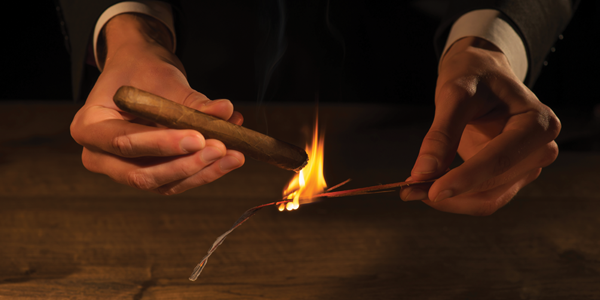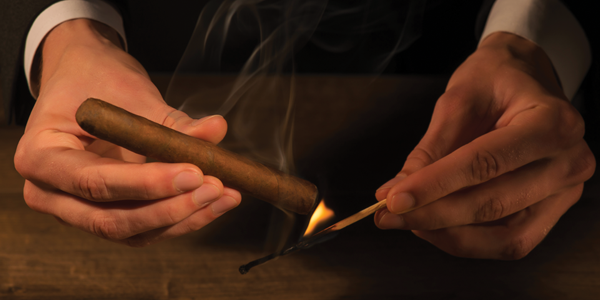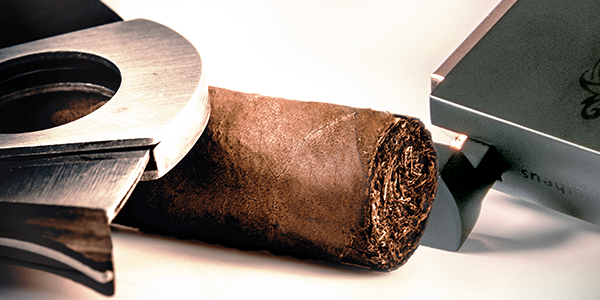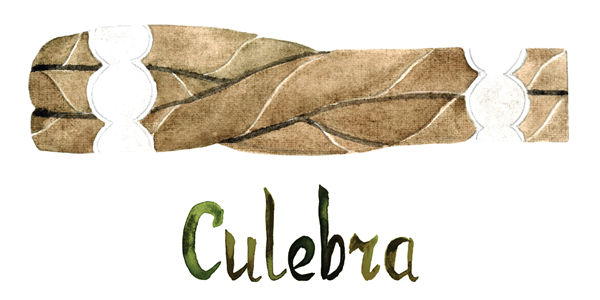How to Light Oddly Shaped Cigars
Before you fire up a premium cigar, knowing how to cut and light it correctly is essential. It’s not rocket science, but there are techniques you can follow to ensure your cigar will draw correctly and burn evenly. There are also a few subtle nuances to keep in mind when you’re lighting up different cigar shapes. Here are some easy tips to consider when you’re firing up a standard 5 x 50 Robusto, a big ring gauge cigar, a box-pressed format, or a Perfecto.
Lighting Standard Shapes
Lighting a cigar in standard shape, also called a Parjejo (e.g., Robusto, Corona, Toro, or Churchill), is pretty straightforward. Whether you use a soft-flame lighter, a high-performance torch, matches, or cedar spills, hold the foot of your cigar just above the flame. Lighting your cigar with different methods can influence its taste and burn. You don’t want to submerge the end of your cigar directly in the flame.
Gently toast the foot and draw the flame toward your cigar when you puff on it. Rotate your cigar as you light it so that the entire circumference is lit equally for an even burn. Once your cigar is lit, inspect the foot and gently blow on it. The cherry at the end should display a uniform burn.
If your cigar is not burning evenly after a few minutes, inspect the end and apply a touch up with your lighter or matches to encourage the burn to even out. There are ways to remedy an uneven burn if you think your cigar is canoeing or tunneling.
Lighting a Big Ring Gauge Cigar
Big ring gauge cigars are everywhere. Cigars that were 54 or 56 in ring gauge used to be considered pretty thick, but today it’s common to encounter cigars with a 60, 64, or even 70 ring gauge. If you’re a fan of ultra-fat cigars, summon some extra patience when you’re lighting up. Big ring gauges take longer to ignite simply due to the volume of tobaccos they contain.
It’s a common sight to see fans of big ring gauge cigars blast the foot with a powerful high-octane cigar torch with three or four jets pumping butane into the end, but that’s overkill. You don’t have to hit the foot of a fat cigar with a flame-thrower to light it. Gently toast the end, but be a little more patient in rotating your cigar over the flame, whether you’re using a soft flame or a torch lighter. If you’re using matches, strike two at the same time to produce a wider flame. We recommend using two matches for all cigars in general, but especially for big ring gauge shapes.
Lighting a Torpedo or Pyramid
A little more patience is also required when lighting a Torpedo or a Pyramid-shaped cigar. Because the shape of a Torpedo tapers at the head, the draw will be tighter. Gently toast the foot of the cigar over the flame, but when you draw on it, you may have to pull more aggressively during the first few puffs.
Torpedo-shaped cigars generally cost more because they are more complicated to roll. The tighter draw they offer delivers a greater concentration of flavor and heat directly onto your palate, which increases a cigar’s intensity. Although the draw is tighter, you should still be able puff without obstruction and achieve an even burn.
Lighting a Box-Pressed Cigar
Because box-pressed cigars possess sharp corners, the key to lighting them correctly is in rotating the cigar over the flame. Turn the cigar in 25% increments as you take your first draws. This way, one side or corner is less likely to canoe or burn unevenly. As with any cigar, avoid chomping down on the end that’s in your mouth. You can crimp the draw and provoke an uneven burn. Due to the corners on a box-pressed cigar, an unwanted uneven burn will be more dramatic if you bite down on the end that’s in your mouth. The air passes through one side of the cigar faster and with less effort than the side that is constricted.
Lighting a Perfecto
Perfecto-shaped cigars like Arturo Fuente Hemingway Short Story (4 x 49), Ashton VSG Enchantment (4.375 x 60), and San Cristobal Maestro (6 x 60), are handmade in a bulbous and visually striking format. The foot of the cigar is noticeably fatter than the head. The shape tapers from the foot to the head. But, the foot is encapsulated by the wrapper leaf which culminates in an abrupt nipple at the very tip.
When it comes to lighting a Perfecto, be sparing. You only have to light the very end of the nipple at the foot. The draw will be tougher in the beginning, but the advantage to smoking a Perfecto is that you are getting much more flavor directly from the wrapper leaf in the initial puffs. Any shape with a closed foot is designed to achieve the same effect. Gradually allow the girth of the cigar to ignite as you smoke it rather than trying to blast the foot with a triple-jet lighter.
Lighting a Culebra
A Culebra is three cigars braided together, typically bound by a single band as well as a ribbon at the foot. Culebra is Spanish for snake. Origins of the Culebra are debatable. Some stories suggest the unusual shape was invented as a method to track what cigars the rollers in a factory were smoking. Supposedly, cigar rollers were allotted only Culebras for personal consumption. Any factory workers caught smoking traditional shapes were deemed thieves. There is little evidence to back up this finding.
In any case, if you encounter the rare opportunity to smoke a Culebra, know that the three cigars are meant to be smoked individually. Remove the cigar band and the ribbon at the foot and gently untwist the cigars from their entanglement. Don’t try to straighten them out, though. Each of the cigars in a Culebra is intended to be smoked in its curlicue shape. Cut the cigar’s head and fire up the foot.
The Culebra consists of three thinner ring gauge cigars, like a standard Panetela (6 x 38). The cigars tend to be under-filled and are braided together while the tobacco is still wet and pliable. Because of the nonlinear shape of each cigar in a Culebra, you may have to touch up the foot with your lighter as you smoke it.







